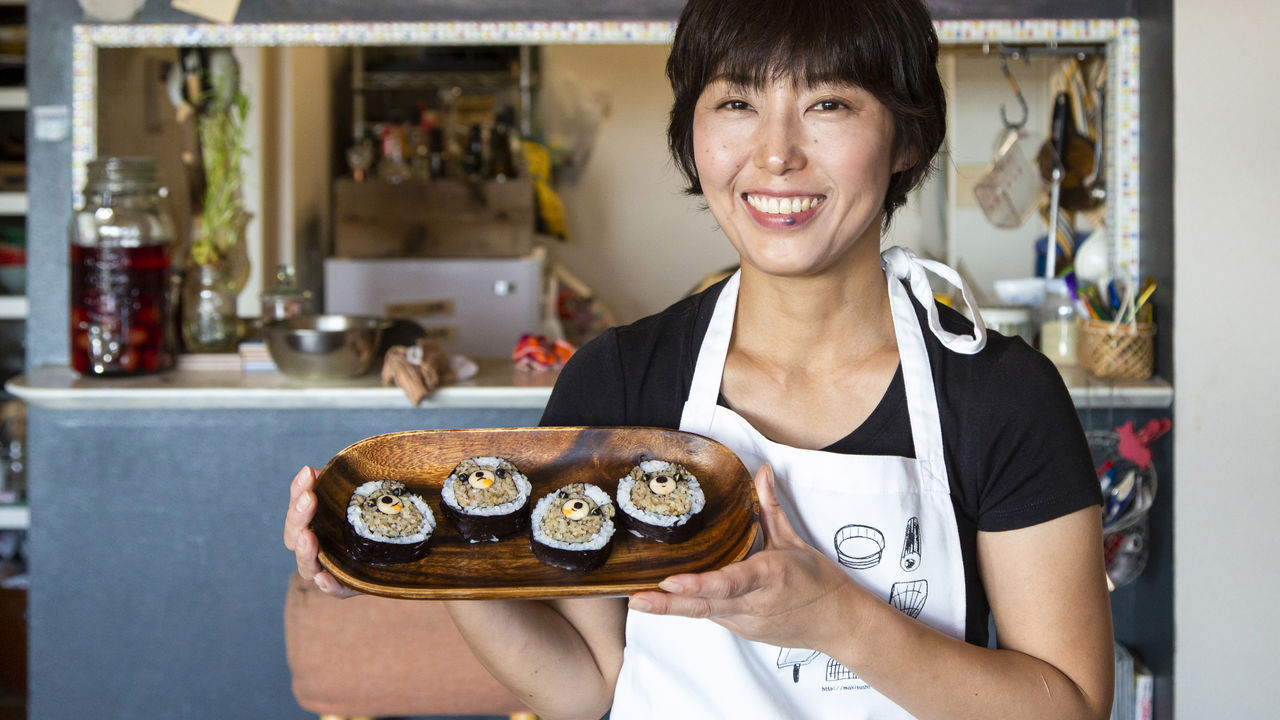
Unbearably Adorable Teddy Bear Sushi Rolls
JapanIn video
Guide to Japan- English
- 日本語
- 简体字
- 繁體字
- Français
- Español
- العربية
- Русский
A Collaboration of Colorful Sushi Rice and Selected Fillings
A master of artistic makizushi rolls, Yahata Meiko this year earned the title of the 2018 “Makizushi Ambassador.” She starts, she says, by imagining how she wants her kazari—or decorative—rolls to come out. She then combines colored sushi rice and a selection of ingredients, rolling them together in sheets of dried nori seaweed that serve as a frame for the finished product.
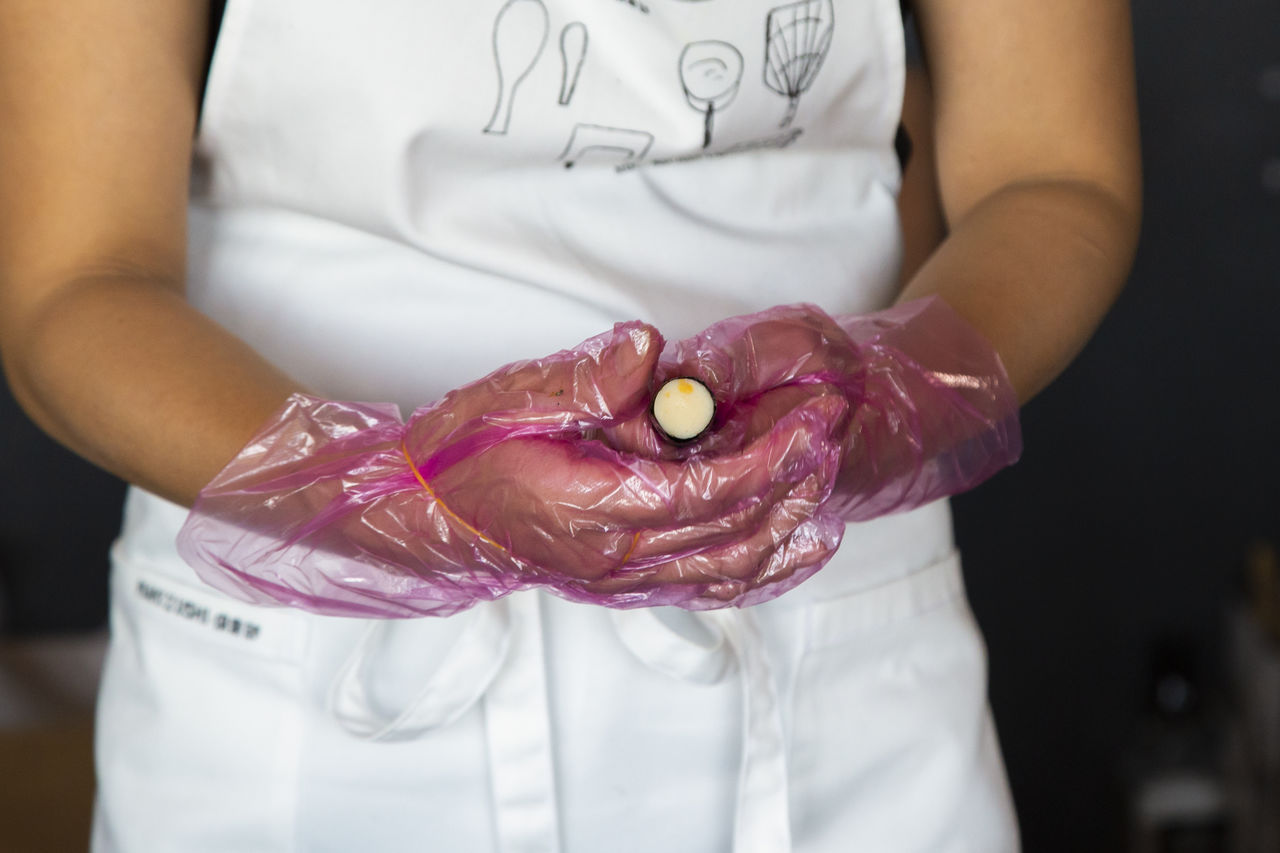 This small kamaboko processed fish paste stick containing bits of cheese serves as the bear’s snout.
This small kamaboko processed fish paste stick containing bits of cheese serves as the bear’s snout.
For the fish rolls of the previous article in this series, turmeric was used to dye the sushi rice yellow. This time ingredients that can be found in just about any Japanese household are used to produce a rainbow of colors: brown, made by mixing finely chopped dried bonito flakes (okaka) with vinegared sushi rice; pink, the color of sakura denbu, a light, fluffy dried fish meat product; orange, sushi rice mixed with a dash of tomato sauce; purple, yukari, a powered topping made of dried red shiso leaves; and gray, ground sesame seeds.
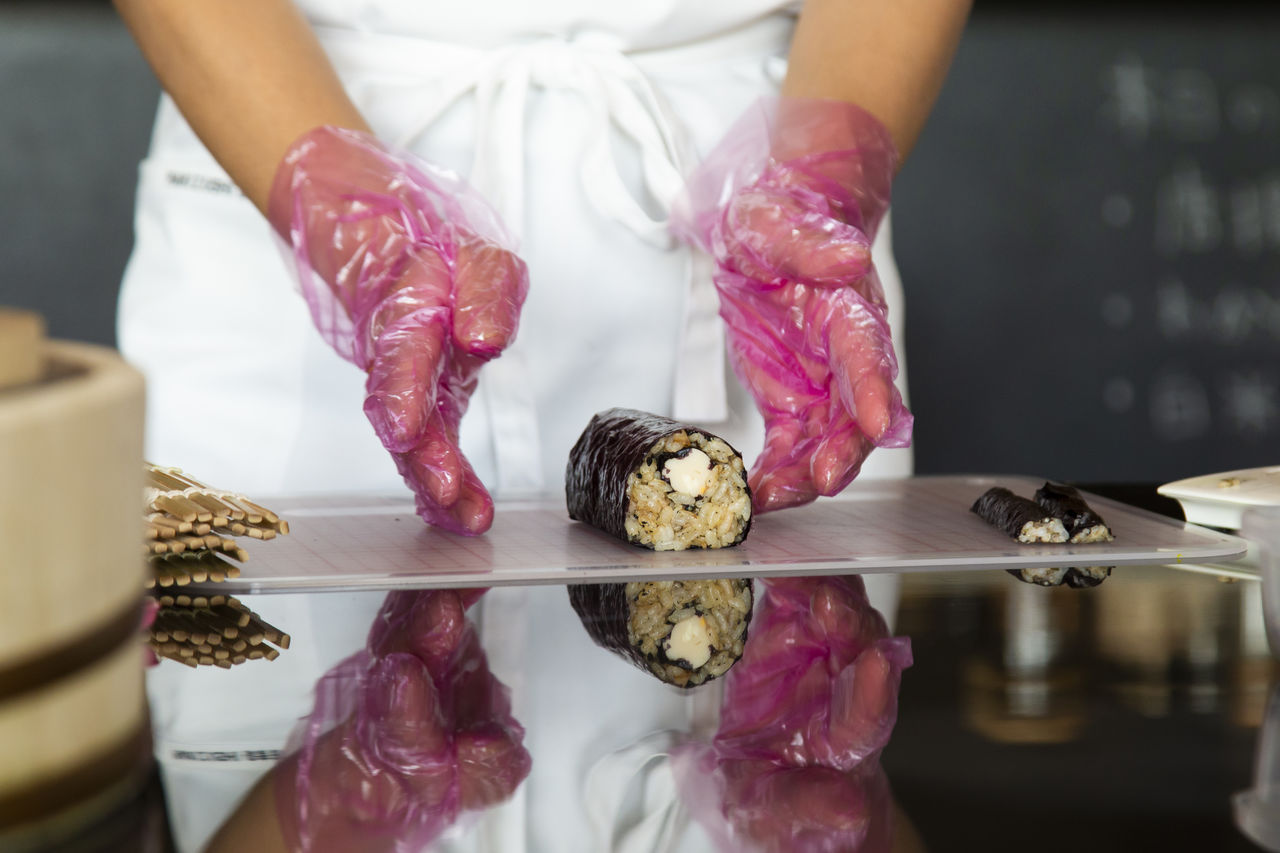 Wrap the kamaboko fish paste stick in a layer of sushi rice mixed with okaka. The two small pieces visible at the right are small rolls of the same brown sushi rice with a semicircular shape. They will be used for the ears.
Wrap the kamaboko fish paste stick in a layer of sushi rice mixed with okaka. The two small pieces visible at the right are small rolls of the same brown sushi rice with a semicircular shape. They will be used for the ears.
The black outline created by the nori can be made more festive by adding a thin layer of green spinach leaves, boiled and with the water squeezed out, or a golden layer of thinly fried egg sheets.
Other colorful ingredients that can be used inside the rolls include broccoli, carrots, and colored bell peppers. Orange and white crab sticks (kani kamaboko) can be used to add an extra splash of color. Rounds cut from sticks of cheese or fish sausage can also be used for embellishment.
Here we use a kamaboko fish paste stick containing pieces of bright yellow cheese for the bear’s snout.
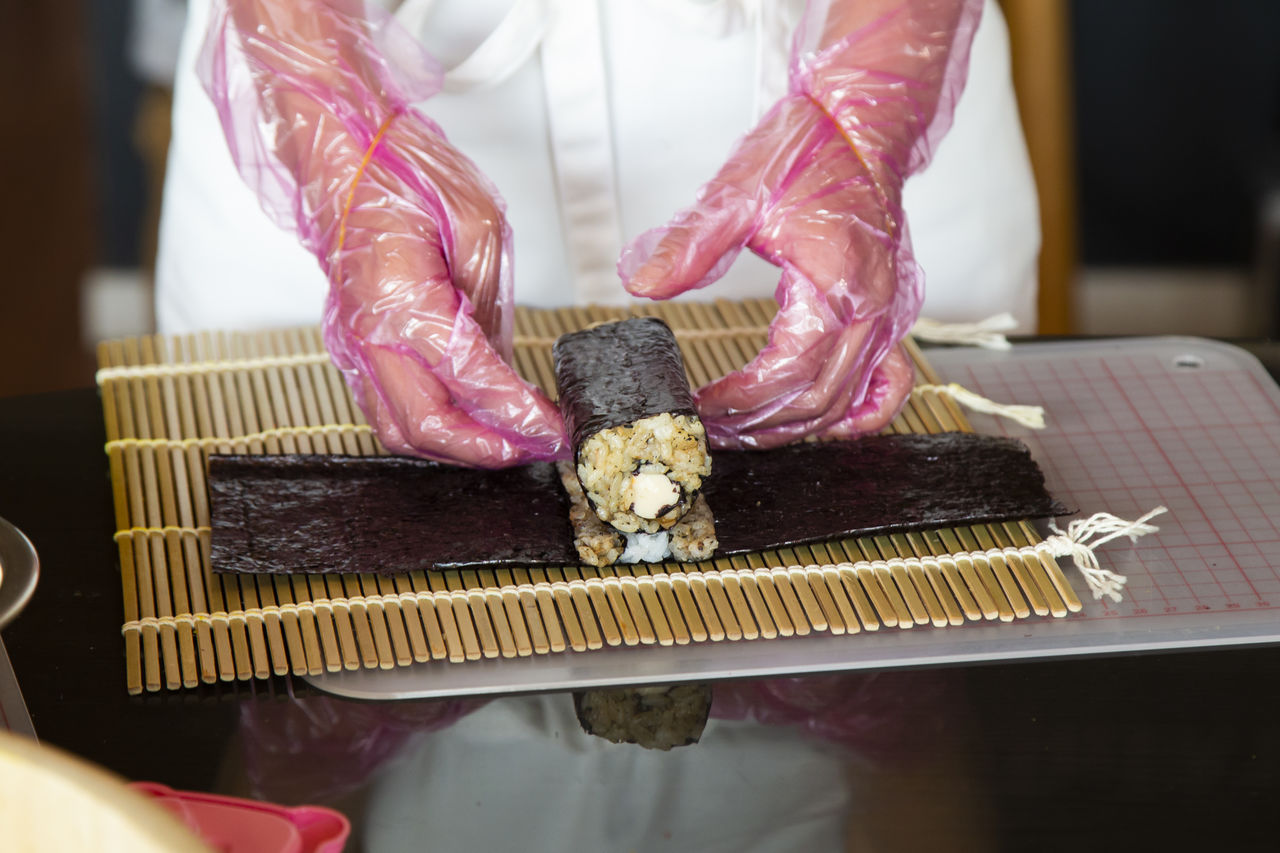 The pieces for the ears and face are easier to assemble upside down.
The pieces for the ears and face are easier to assemble upside down.
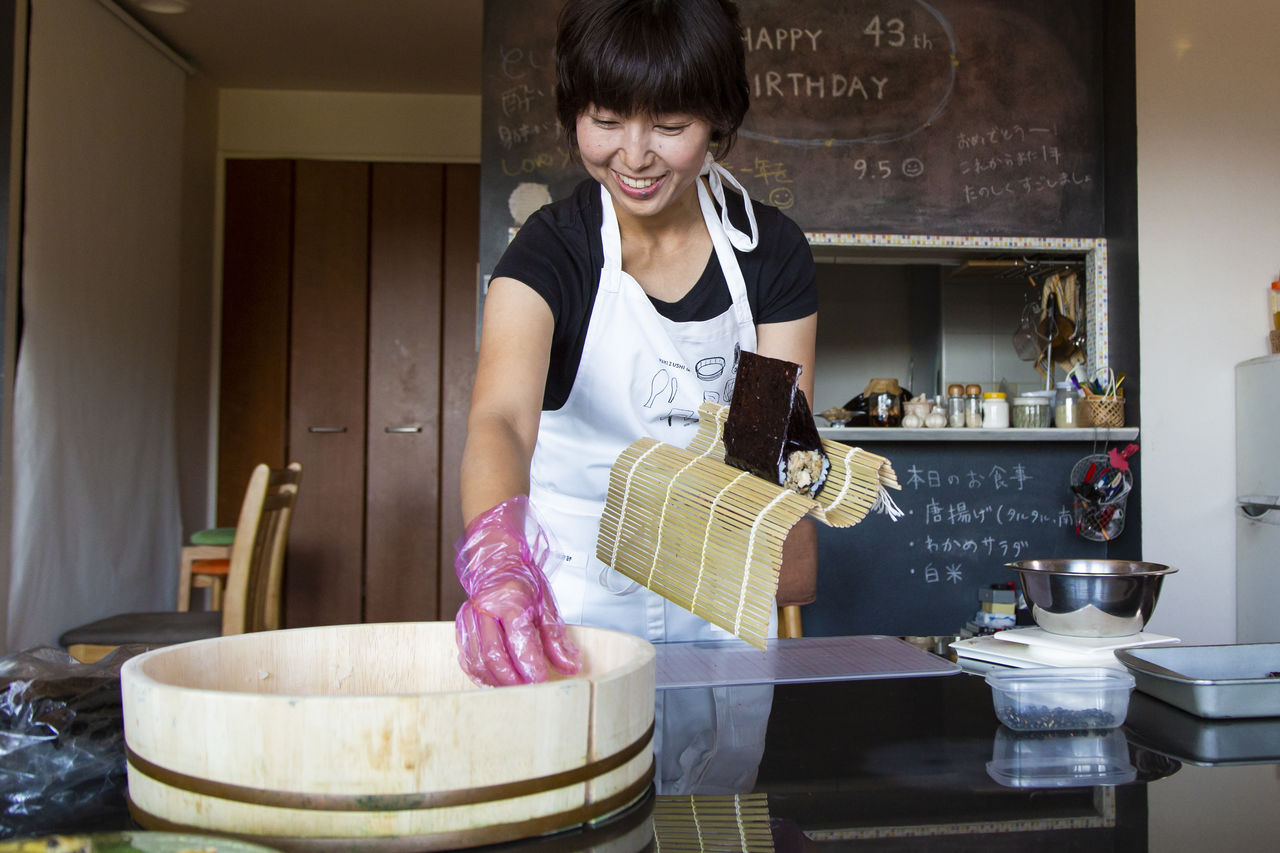 White sushi rice is added as the roll is wrapped to fill it out.
White sushi rice is added as the roll is wrapped to fill it out.
All It Takes is a Bit of Imagination
After going to all this trouble, it would be a pity if the roll was squashed when you tried to cut through the nori. For a sharp, clean cut, use a knife that has been moistened and cleaned with a damp cloth. Wipe the knife again after each cut to remove the sticky residue. With this little extra effort, your kazari makizushi are certain to come out crisply cut and well-defined.
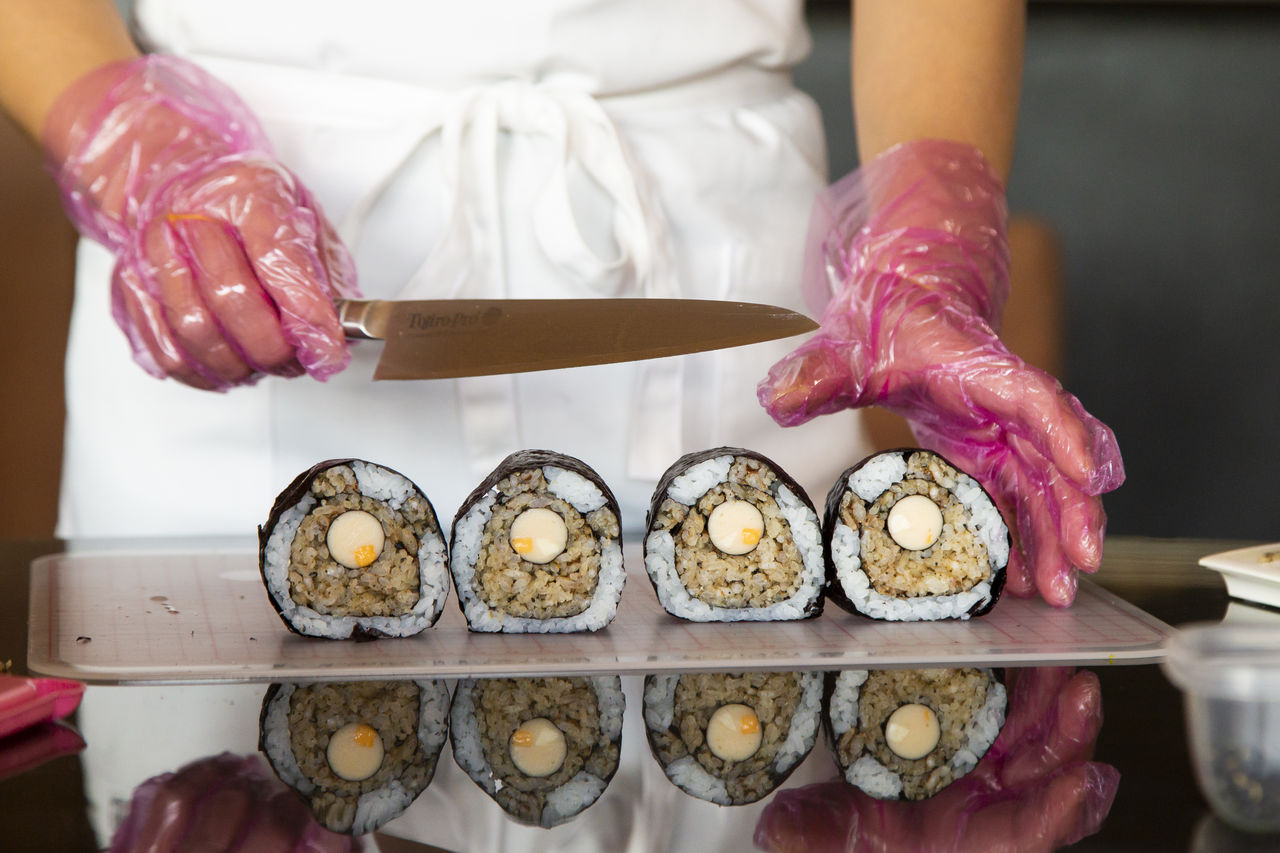 The knife will cut through the rolls more smoothly if it is first wiped with a damp cloth.
The knife will cut through the rolls more smoothly if it is first wiped with a damp cloth.
Faces are made with tiny pieces of nori, black sesame seeds, black soybeans, and the like to form eyes and mouths. It is amazing how the features come to life when the eyes are added. Here, black roasted soybeans are used for the bears’ eyes, but there are no hard and fast rules. Use whatever you like. Flavored beans bought in a supermarket will do just as well. Eyes made of slivers of black nori on round slices of cheese can have a very dramatic effect.
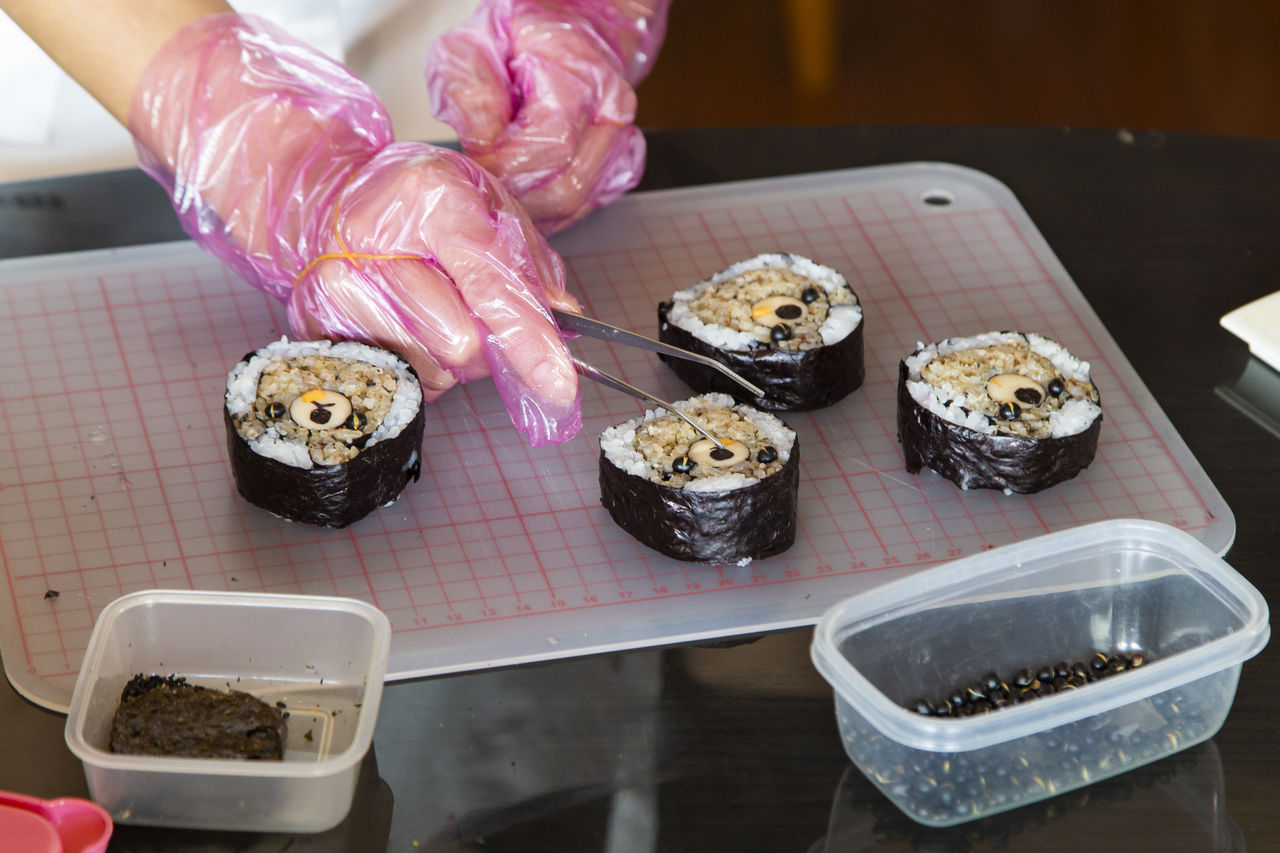 Here black soybeans serve as the eyes, and tiny slivers of black nori as the mouth and nose.
Here black soybeans serve as the eyes, and tiny slivers of black nori as the mouth and nose.
A cutting board marked with a grid can be a useful tool for making kazari makizushi. The lines on the board will help you cut pieces evenly and to the desired size. In Japan, these cutting boards can often be found in a 100-yen shop. A kitchen scale can be useful for making sure you have just the right amount of sushi rice for each piece. The makisu bamboo mat used to shape and press the rolls can also be bought at a 100-yen shop or supermarket in Japan; overseas, try an Asian food market.
• Ingredients
- Nori (dried seaweed sheets), as needed
- Kamaboko fish paste stick with bits of cheese
- Sushi rice mixed with finely chopped okaka dried bonito flakes
- Black soybeans (roasted kuro-sengoku soybeans used here)
See the video for assembly instructions.
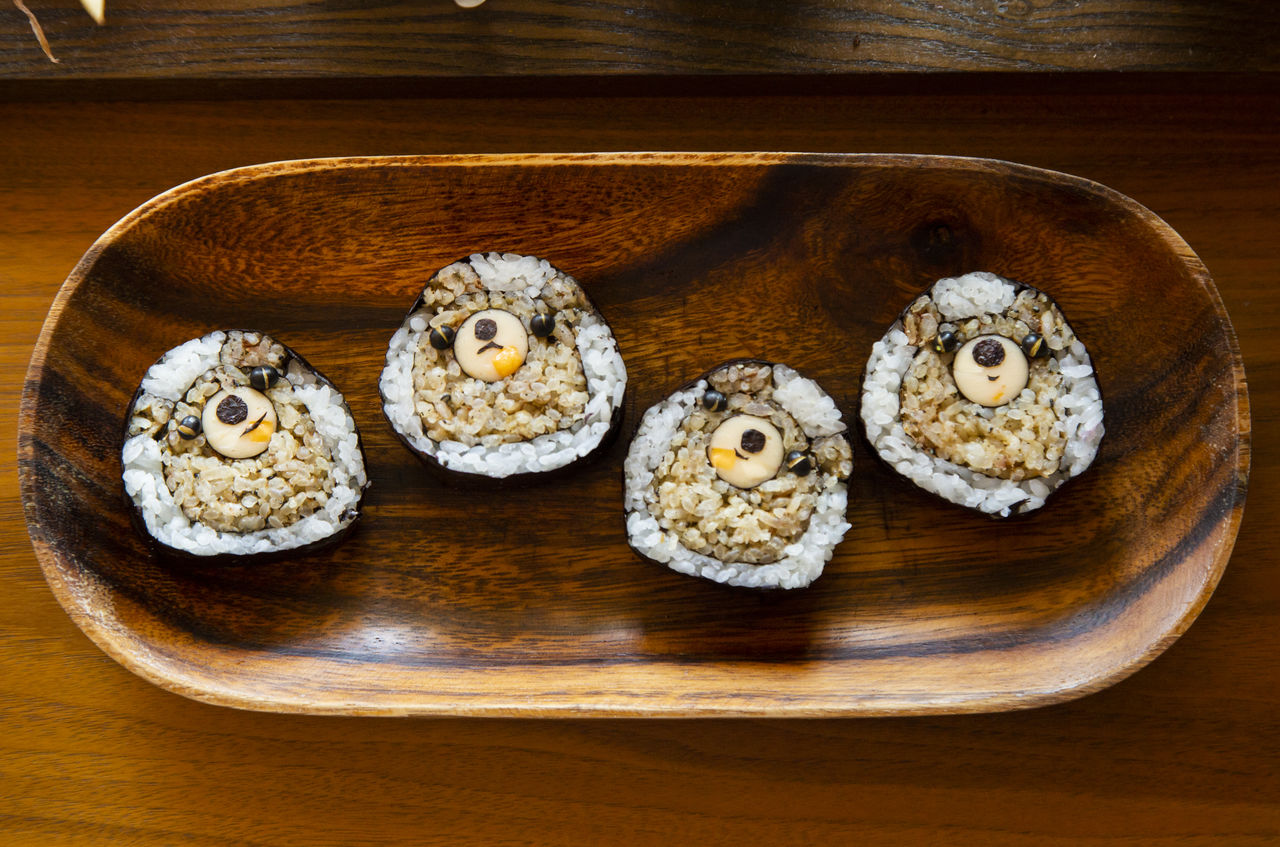 The little bears can be given any expression you like; play with the placement of eyes and mouth to see what you can achieve.
The little bears can be given any expression you like; play with the placement of eyes and mouth to see what you can achieve.
(Originally published in Japanese on November 16, 2018. Photographs and text by Nippon.com. Video by Noguchi Kaori.)